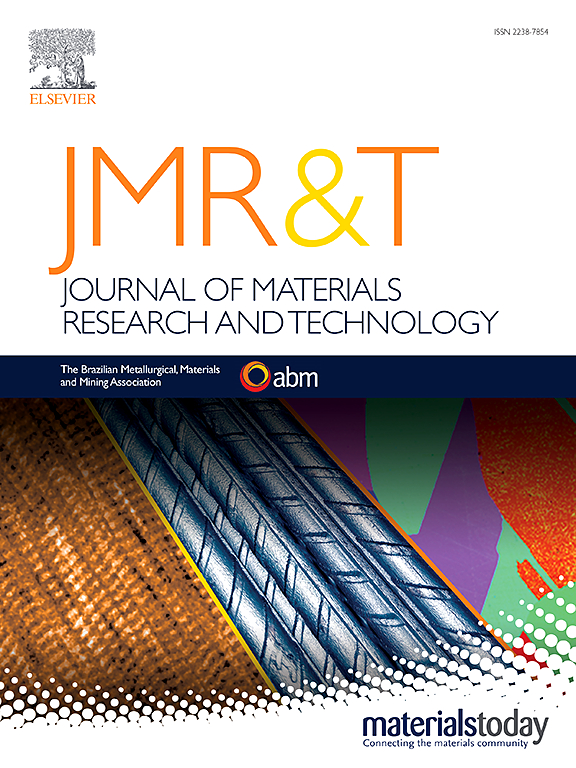激光冲击加工与表面织构复合处理9Cr18钢摩擦磨损研究
IF 6.6
2区 材料科学
Q1 MATERIALS SCIENCE, MULTIDISCIPLINARY
Journal of Materials Research and Technology-Jmr&t
Pub Date : 2025-06-09
DOI:10.1016/j.jmrt.2025.06.039
引用次数: 0
摘要
采用激光冲击加工(LSP)和激光诱导表面织构复合处理提高9Cr18钢的摩擦学性能。在5 ~ 7j的能量下进行激光辐照,通过控制激光参数形成深度为9.9 ~ 32.5 μm、表面密度为21 ~ 37%的微坑,实现了表面织构。结果表明,在7J时,LSP显著提高了表面硬度至820HV0.1,诱导了−876 MPa的残余压应力,晶粒尺寸细化了10.20%。在边界润滑条件下,LSP-6J与表面织构的协同作用可使摩擦系数降低57%,磨损损失降低90%以上,其中织构深度为18.0 μm、表面密度为37%时效果最佳。在干摩擦条件下,复合材料的摩擦系数降低了57%,磨损损失降低了90%以上,其中织构深度为14.6 μm,表面密度为37%时效果最好。磨损机制从磨料和黏着磨损转变为轻微的磨料磨损,这是由于表面硬化、润滑剂保留和纹理捕获碎片的综合作用。本文章由计算机程序翻译,如有差异,请以英文原文为准。
Study on friction and wear of 9Cr18 steel with composite treatment of laser shock processing and surface texturing
The composite treatment of laser shock processing (LSP) and laser-induced surface texturing was employed to enhance the tribological performance of 9Cr18 steel. LSP was conducted with energies of 5–7J, while surface texturing was achieved by controlling laser parameters to produce micro-pits with depths ranging from 9.9 to 32.5 μm and surface densities of 21–37 %. The results demonstrated that LSP significantly improved surface hardness to 820HV0.1 at 7J, induced −876 MPa residual compressive stresses, and refined grain size by 10.20 %, as revealed by EBSD analysis. The synergistic effect of LSP-6J and surface texturing reduced the friction coefficient by 57 % and wear loss by over 90 % under boundary lubrication, with optimal performance observed at a texture depth of 18.0 μm and surface density of 37 %. Under dry friction, the composite treatment achieved a 57 % reduction in friction coefficient and over 90 % reduction in wear loss, with the best results at a texture depth of 14.6 μm and surface density of 37 %. The wear mechanism transitioned from abrasive and adhesive wear to slight abrasive wear, attributed to the combined effects of surface hardening, lubricant retention, and debris trapping by textures.
求助全文
通过发布文献求助,成功后即可免费获取论文全文。
去求助
来源期刊

Journal of Materials Research and Technology-Jmr&t
Materials Science-Metals and Alloys
CiteScore
8.80
自引率
9.40%
发文量
1877
审稿时长
35 days
期刊介绍:
The Journal of Materials Research and Technology is a publication of ABM - Brazilian Metallurgical, Materials and Mining Association - and publishes four issues per year also with a free version online (www.jmrt.com.br). The journal provides an international medium for the publication of theoretical and experimental studies related to Metallurgy, Materials and Minerals research and technology. Appropriate submissions to the Journal of Materials Research and Technology should include scientific and/or engineering factors which affect processes and products in the Metallurgy, Materials and Mining areas.
 求助内容:
求助内容: 应助结果提醒方式:
应助结果提醒方式:


